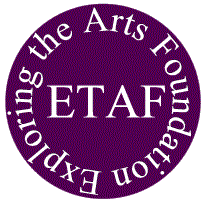|
| ||||||||||||||||||||||||||||
|
||||||||||||||||||||||||||||
|
|
||||||||||||||||||||||||||||
more about alphabets, letters, and words
Alphabets in the artsWhat do alphabets have to do with the language arts? Well, first and foremost, of course, they are the most basic ingredient, the building blocks of most languages. Alphabets, letters, and words go together like horses and carriages. With relatively few exceptions, you can't have an art that depends on written language without the symbols they contain. Alphabets are the first elements, the most basic language facts, and the simplest rudiments of most written languages. Everyone encounters them in everyday writing and speech. Where the arts are concerned, so fundamental are they and so ubiquitous, we tend to take them for granted, to overlook them in our pursuit of more complex and less mundane elements that go to make up a work of art. But much effort has gone into developing alphabets over the centuries and they have a key role to play in all the arts that incorporate language, as well as in the language arts per se. From the creative artist's perspective, the skillful manipulation of written language is essential to almost any artist who seeks to produce successful, gratifying, and pleasurable works of art. Even artists can easily tend to overlook or forget this fact. Here, The Muse Of Language Arts seeks to rectify these oversights. In this feature, The Muse has two primary goals:
In this feature, The Muse's primary objective is not scientific or scholarly; it's artistic. The Muse does not seek to provide a collection of linguistic or historic treatises on alphabets. Rather, the aim is to engender alphabetic proficiency; it's to build alphabetic IQ, if you will, and a database of alphabets, that will make it easier to read, write, and understand works of art, as well as to promote alphabetic awareness, understanding, and appreciation for the role alphabets play in the arts. about the alphabets chosen for this featureMost of the world's written languages are constructed out of words and letters; they are quite unlike ideographic languages such as Chinese or Japanese, which are constructed out of script, or pictographic languages such as ancient Egyptian hieroglyphics, which are constructed out of recognizable pictures of the things they represent. Written languages that use words and letters normally employ a device called an alphabet to express the system of letters, characters, or signs, in which they are written. In contrast, languages like Japanese use character sets called scripts. Although the primary targets of this feature are languages that employ letters (and therefore alphabets), this feature does not treat alphabets to the exclusion of other kinds of symbol systems. Most of the alphabets of interest here will probably be foreign to visitors to these pages. This is the case because many visitors are monolingual or bilingual at most; they only speak or write one or two tongues. Inevitably, these kinds of visitors will need help with reading and understanding the character sets and other symbols that comprise any language that is not their native one or an alternate. The Muse Of Language Arts believes that, insofar as possible, foreign alphabets should not present insuperable impediments to readers or writers not formally trained in them. Since most of the visitors to these pages read or write English, either as a primary or secondary language, The Muse has chosen to provide a collection of alphabets taken from different languages that an English-speaking reader or writer is likely to encounter in an exploration of the arts. The Muse provides these alphabets and information about them to help such visitors understand, translate, and otherwise deal with letters and signs in English or in other languages they are likely to encounter.
| ||||||||||||||||||||||||||||
|
| ||||||||||||||||||||||||||||
Search this web site with Electricka's Search Tool:
tap or click here
Electricka's Theme Products
Shop At Cafe Press
This web site and
its contents are copyrighted by
Decision Consulting Incorporated (DCI).
All rights reserved. | ||||||||||||||||||||||||||||










